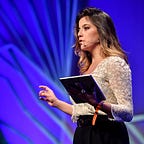About Hacking Communities (in a Nutshell)
Article originally published on Linkedin
I’ve found Dandelions in almost every city I’ve visited in the world.
These fluffy balls spread tiny yellow flowers on the grass and are a great example of community building. Its seeds go with the wind and grow anywhere, even through the cracks in the sidewalks… Grassroots. It doesn’t depend on a central leadership to determine where they will go. Trusting its seeds, it spreads around the world.
Grassroots communities have the power to spread an idea like Dandelion seeds. Ideas have the power to move people, not depending on the boss telling them what to do.
According to historian and ‘Sapiens’ author Yuval Noah Harari, humans are different from other animals because we use language “not merely to describe reality, but also to create new realities, fictional realities.” He adds that “as long as everybody believes in the same fiction”, we act in accordance to what others expect, following rules, norms and values. Communities are powerful tools to move crowds and with great powers, come great responsibilities (quoting Uncle Ben, of course).
We are living a once-in-a-lifetime opportunity to grow better communities and spread abundance as an idea to live by.
What Kind of Communities?
Regardless if you’re talking about a team, an interest group or a cause for social impact, you need people taking action around it. How can you incite action in people without excessive advertising, spamming or micro-managing? How can you motivate founders in a startup ecosystem to collaborate more? How can you create public spaces which build trust amongst citizens, for safer cities? How to build a brand which people feel proud to represent?
Communities matter.
And more. We lived long (and prospered) thanks to communities. It’s why we, naked apes with unimpressive teeth and inexistent claws survived hash weathers and hideous beasts. It’s likely that those who didn’t belong left no descendants to tell their story.
Moreover, living in communities feels good. According to psychologist — and author of “The Village Effect” — Susan Pinker, social integration (close interactions with your local community) can boost longevity. Check her TED talk later.
There’s more science to it (if you’re a nerd, let’s talk!), but the fact is: technology has changed everything.
While belonging remains a biological imperative, we no longer belong the way we used to. Once again, we must adapt.
We no longer live in caves or small villages, yet belonging still matters and we need new communities. The world is more connected. Mobility: we are free to belong anywhere. Connectivity: We meet people across the globe and share relatable memes, regardless of location or ethnicity.
Yet, loneliness has become an epidemic (as reviewed by HBR), a fact given evidence by the appointment of Tracey Crouch as Britain’s Minister for Loneliness.
We need better communities which are grassroots, diverse and abundance-minded.
Communities should be a platform for individuals to feel safe and thrive.
To keep it simple, you can build one around a product, place or cause (whatever is purposeful to you).
What is Community Hacking?
An old friend used to say “community building is like a Thanksgiving dinner: we get together to eat the Turkey, but what matters are the conversations around the table”. That’s accurate. That friend is Hugh Mason, Co-Founder and CEO of JFDI Asia, one of the most remarkable accelerator programs in Singapore.
According to another old friend (and community genius) the frequency of encounters matters: cadence. That friend is Derek Andersen, Founder and CEO of Startup Grind. They grew the largest grassroots startup community in the world, present in 400 cities across 120 countries (with 1,500,000 members and counting).
I believe communities start with making friends (which by no coincidence, is one of Startup Grind values: make friends, not contacts, I love it).
Given human history, we’re all instinctively community builders, but we’re out of practice.
Hacking Communities is about sharing insights I had (and keep having) on how to start a community from scratch or grow an existing one. I was lucky to stand on the shoulders of giants who I’ve worked with, read or observed on building communities. Now, I’m willing to share my (ongoing) learnings as a means to add value while using it as an excuse to meet people who want to spread abundance-minded communities around the world.
As I share knowledge, I’m building my own community.
It doesn’t matter if your community is about a more productive work culture or cosplaying Marvel characters. It’s about bringing people together frequently enough until they start trusting each other.
It’s all about creating spaces, hosting opportunities and engineering serendipity.
In fact, community building isn’t about “building”, but connecting people who already belong together.
This project talks about the simple, replicable practices to build communities that grow like nature does: grassroots, harnessing the power of diversity to create an abundant context.
One community at a time, until we’re at a better place.
Feel free to join us at hackingcommunities.com to learn more.
Best,
Lais de Oliveira
PS: we are hosting our first workshop in Brazil by the end of September, check if you are around (and are a Portuguese speaker): www.hackingcommunities.com/workshop-brasil
